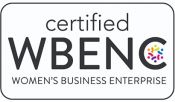Dental Practice Management – Steps to Transform a Standard of Practice Playbook
Let’s have a conversation
The standardization and alignment of administrative and clinical processes to current state best practices and technological advances is a core but often overlooked part of dental practice management. Your practice management standards of practice involve the processes, resources and management strategies involved in driving your daily workflows and patient care. This includes everything from patient and insurance data management to your financial reporting and resource allocation. The management of a dental practice may look different for a privately owned practice or practice group versus a dental service organization. Ultimately, no matter the type of operational model of your organization, it helps you run efficiently, stay compliant and maintain above average patient satisfaction on a consistent basis.
Every dental practice needs careful organization to run smoothly. You can deliver the dental experience your patients and team deserve with a streamlined approach to dental practice management — starting by updating your standards of practice playbook. This document covers compliance, employee training, dental procedures, reporting recommendations and more. Refreshing it will help you deliver a higher quality of care while making everything at your practice as straightforward as possible.
Your Dental Practice's Standards of Practice Playbook
A practice's SOP playbook is your guiding document. It sets up everything in your practice — how to handle treatment plans, patient intake and more. A SOP sets a high bar for care at your operation and keeps a consistent quality standard. While your SOP is essential for streamlining care and maximizing efficiency, it can become outdated. Neglecting to keep up with your SOP playbook can leave you with outdated, inefficient standards that decrease your service quality.
How to Upgrade Your SOP Playbook
Your SOP may be responsible for a dip in customer satisfaction or practice efficiency. Taking time to revamp your playbook is an excellent way to cut inefficiencies and improve your practice. Use these steps to bring your playbook into the present, ensuring your staff and customers get top-notch oral care.
1. Review Your Current Document
First, look at your current document. Carefully review every section, looking for improvement areas, inconsistencies, unclear procedures or outdated information. You can ask one or two employees to help you with this task. Your team members are an invaluable resource — they work with the playbook every day and may give you a fresh perspective you haven't considered.
Reassessing your existing document gives you a better idea of what needs work, simplifying the rest of the process.
2. Define Your Objectives
Next, it's time to define your objectives. What specific goals do you want to achieve with this update? What experience do you want to deliver? Whether you're looking to enhance patient safety, streamline administrative processes or ensure compliance with the latest privacy and industry standards, realistically achievable goals will help you pinpoint where to look for assistance and let you anticipate whether the ultimate outcome meets your needs. Plus, you're less likely to forget something critical if you set goals upfront.

3. Gather Input
Since your staff deals with patients and procedures daily, talking to them is critical. Encourage open communication from your team during and after updating your document. Their experience-based feedback can make your playbook as valuable as possible. Additionally, reach out to customers or read their reviews. You might find a common complaint you can resolve with simple tweaks and improvements. A playbook that accurately reflects your team and customer experience will be more practical for daily use.
4. Research Applicable Regulations and Guidelines
Make sure your playbook is up to date on the latest changes in safety protocols, dental practices and other compliance requirements. You want your playbook to be as accurate as possible — failing to stay current with legal requirements can put you at risk for compliance-related issues and mean your dental care may be out-of-date with current clinical guidelines.
5. Simplify Language and Structure
Your playbook should be unambiguous and easy to read for maximum usefulness. Use simple language throughout to prevent misunderstandings. Additionally, consider visual aids, illustrations and flowcharts for improved accessibility. These tools make your playbook more reader-friendly, usable and memorable.
6. Include Comprehensive Information
A thorough SOP playbook covers everything your practice might need to deal with. Include employee training, dental procedures, privacy requirements, ethics standards, infection control protocols and more. Everything your dental practice offers and promises should be up to date and accurate. A playbook that mentions every detail is more relevant for your team.
7. Customize Your Practice
Someone else's playbook can be a good reference point, but no practice is identical to yours. Read your document to ensure it covers your team's specific specialties, needs and workflows. Remember, a more effective playbook equals a more effective dental service.
8. Get Feedback
Once you've completed the new playbook, ask for more team feedback. Encourage employees to take notes on the update and how well it works with their day-to-day needs. Did you mention something that's impractical in real life? What processes are more efficient thanks to the update? Emphasizing collaboration lets you use your team's strengths to create the best possible document.
9. Regularly Update and Review
Your playbook should be a living, evolving document — never set in stone. Letting it stagnate allows it to become outdated and inaccurate. You should establish a review schedule to help you address any emerging issues, add new industry best practices and adapt to technological advancements. A dynamic playbook reflects your commitment to quality in customer service and dental practice.
10. Use a Management Partner
While good dental practice management starts with your playbook, investing in a partnership can take your practice to the next level. Working with a dental practice management service lets you streamline your operations through automation, reducing errors and improving efficiency. It also enables employees to leave feedback on training sections and allows you to standardize your operation further. When paired with your playbook, a partnership delivers a better experience for your employees and customers.

Why ProspHire?
Choose ProspHire for industry-leading innovation that optimizes your dental practice management. We understand and meet healthcare consulting's evolving needs. Our team's dedication to service has earned us spots on the Inc. 5000 and Pittsburgh Business Times' Fastest-Growing Companies list.
We specialize in addressing the challenges dental service organizations and dental providers face. ProspHire offers cutting-edge solutions for PMS implementation, SOP playbook transformation, workflow redesign and more. Contact us online to learn more about how we can help you.
References:
https://www.cdc.gov/phlp/publications/topic/hipaa.html
https://www.prosphire.com/blog/what-is-dental-practice-management/
https://www.prosphire.com/services/dental-practice-management/
ProspHire
216 Blvd of the Allies, Sixth Floor
Pittsburgh, PA 15222
412.391.1100
[email protected]


© 2024 ProspHire, LLC. All Rights Reserved / Terms of Use / Privacy Policy







